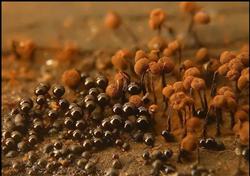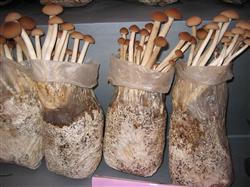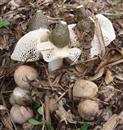Dictyophora planting: what are the diseases and insect pests of Dictyophora?

What are the diseases and insect pests of Dictyophora? What method can be used to prevent and cure it effectively? Also ask experienced friends to help introduce the diseases and insect pests to be controlled by Dictyophora: slime mold, ash fungus, slugs, termites and mites. The following is a detailed introduction and control methods for reference. 1. The harm of slime molds: slime molds occur on the bare soil or covered straw on the surface of bamboo shoot. At the initial stage, they are sticky and move, showing milky white, orange and yellowish green, so that the growth of mycelium is affected or gradually disappears, and in serious cases, it no longer grows Dictyophora; the buds of Dictyophora are waterlogged and moldy. Prevention and control measures: strengthen ventilation. Slime mold control methods: at the initial stage, carbendazim, 1000 times of thiophanate methyl, 500 times of copper sulfate and 10% bleaching powder can be sprayed continuously for 3-4 times. Second, the harm of ash bacteria: Botrytis cinerea often occurs in the environment of high temperature and humidity. In the initial stage, the dirty white fluffy hyphae appeared in the overlying soil layer of Dictyophora border, which soon turned pink and black, and the colony was dark smoke gray, and produced a large number of black spores. It mainly harms the hyphae of Dictyophora, causing the mycelium to break until death. Botrytis cinerea control method: early appearance of dirty white villous hyphae is the best period of treatment, at this time, 3% carbonic acid or 2% formaldehyde can be directly sprayed on the disease. When black spores appear, it can be sprayed with a 700-fold dilution of formalin (70%) and thiophanate methyl (70%). In severe cases, cut off the culture material around the affected area, sprinkle fresh lime in and around the affected area, and cover the affected area with plastic film to control its spread. Third, the harm of slugs: a mollusk, commonly known as "slug", without shell, naked body, mainly devour Dictyophora ball, causing the ball to perforate, leaving a white mucus. Slug control methods: trap and kill slugs with 1:50:50 calcium arsenate, wheat husk and water, or spray 5% coal phenol soap solution and 50% salt water in slug infested places. Fourth, the harm of termites: the common termites that harm Dictyophora are domestic termites, black-winged termites and yellow-winged termites. Can eat the hyphae of Dictyophora, affecting the yield of Dictyophora. Termite control methods: follow the ant nest and the main ant road, with 80% arsenite, 15% salicylic acid, 5% iron oxide into the poison, spray 6-15g per nest can kill the whole nest. Fifth, the harm of mites: it is easy to break out when it is hot and humid, and it occurs in both the mycelium growth stage and the mushroom stage, which can bite off the hyphae, shrink the hyphae, bite the Dictyophora ball and spread germs, resulting in a bad harvest when it is serious. Prevention and control of mites: spray 2.5% Uranus 2000 times solution or other special acaricides. Click to get more planting techniques of Dictyophora, click to get more planting techniques of edible fungi
- Prev

Tea tree mushroom cultivation: how can tea tree mushroom grow with high yield?
How can tea tree mushroom be planted with high yield? Please guide the method of planting Pleurotus ostreatus if you want to obtain high yield, you can refer to the following methods: first, growth conditions of Pleurotus ostreatus 1, nutrition. Pleurotus ostreatus is a kind of wood-rot fungus which has weak ability to decompose lignin and cellulose. Wild Pleurotus ostreatus is only born on Camellia oleifera.
- Next

Dictyophora cultivation: how to standardize the cultivation?
How to standardize the cultivation of Dictyophora? What should I pay attention to? Also ask experienced netizens to help introduce the standardized cultivation techniques of Dictyophora. The following is a detailed introduction of the farming network for netizens' reference. 1. Environmental requirements of Dictyophora: nutritional requirements of Dictyophora: Dictyophora is a nitrogen-loving bacteria, nitrogen is bamboo sun he.
Related
- Fuxing push coffee new agricultural production and marketing class: lack of small-scale processing plants
- Jujube rice field leisure farm deep ploughing Yilan for five years to create a space for organic food and play
- Nongyu Farm-A trial of organic papaya for brave women with advanced technology
- Four points for attention in the prevention and control of diseases and insect pests of edible fungi
- How to add nutrient solution to Edible Fungi
- Is there any good way to control edible fungus mites?
- Open Inoculation Technology of Edible Fungi
- Is there any clever way to use fertilizer for edible fungus in winter?
- What agents are used to kill the pathogens of edible fungi in the mushroom shed?
- Rapid drying of Edible Fungi

